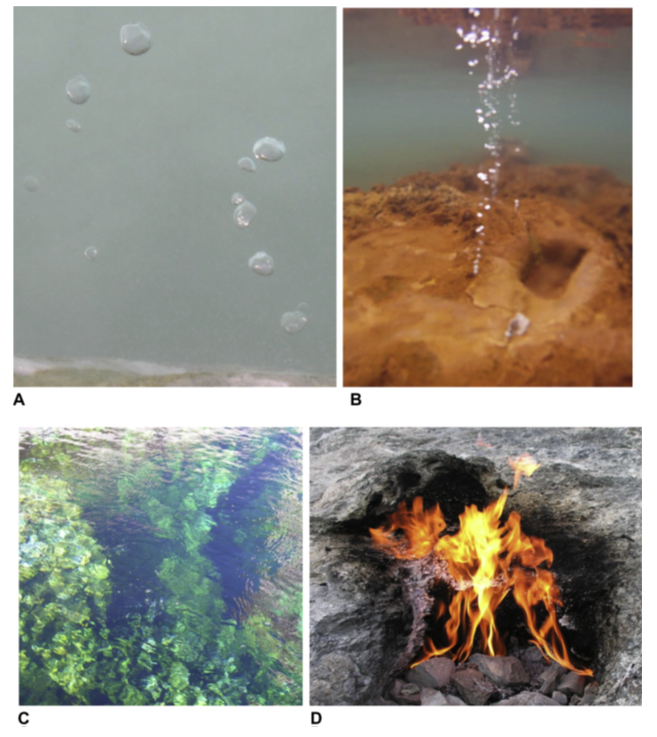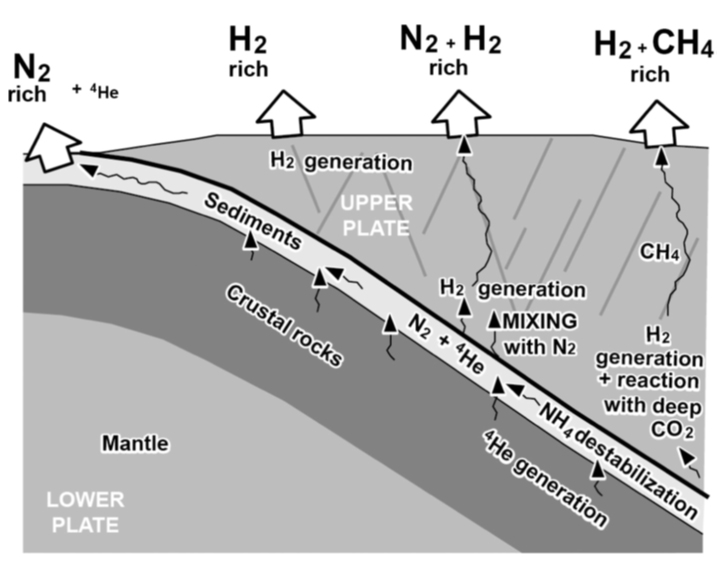04.12.2019
5 minutes of reading
The 5th annual prize awarded by the French Isotope Society (SFIS) for the best article went to Eric Deville, a lecturer-researcher at IFPEN.
On 14 November, the French Isotope Society’s 2019 prize for the best article written by a French-speaker and published in 2018 was handed over to Éric Deville, a lecturer-researcher at IFPEN and coordinator of the paper entitled “Reduced gas seepages in ophiolitic complexes: Evidences for multiple origins of the H2-CH4-N2 gas mixtures” [1]. Published in the Geochimica et Cosmochimica Acta journal, the article was co-written by researchers based at IFPEN, Sorbonne University and the National Institute of Geological Sciences in the Philippines.
Ophiolitic complexes, reaction mechanisms and the formation of seepages at various locations around the world
The research detailed in this publication is related to a comparative study of reduced natural gas seepages occurring in ultrabasic and basic outcropping rocks in ophiolitic complexes1, at various locations around the world2. It is based on analyses of the gas chemical composition, rare gas contents and stable isotopes of carbon, hydrogen and nitrogen in samples taken at these different sites.

These seepages are primarily made up of mixtures of three gases in varying proportions: H2, CH4 and N2. Their relative concentrations reveal several types of gas mixtures reflecting different gas generation zones, within or beneath ophiolitic complexes (some relatively superficial, others deeper).
The article presents the conditions leading to the formation of the gases present in the mixtures and explains the reaction mechanisms at play in the various scenarios.

In this interpretative diagram, hydrogen is generated in the ophiolite by the reduction of water, at various depths. It then gives rise to various types of seepages depending on the fluids interacting with it:
- When hydrogen is generated in a shallow aquifer, it migrates upwards and seeps out of the rock as an H2-rich gas.
- Hydrogen generated at a greater depth interacts with deep fluids that may be:
- nitrogen-rich due to sediments and the mantle below, leading to a mixture with high concentrations of N2 and H2 ;
- CO2-rich, enabling the production of CH4 and the formation of a gas mixture that infiltrates through to the surface in the form of seepages, H2-CH4 gas mixtures.
- nitrogen-rich due to sediments and the mantle below, leading to a mixture with high concentrations of N2 and H2 ;
- Nitrogen-rich seepages occur when the deep liquid containing N2 does not interact strongly with H2-rich fluids during migration.
1 Ophiolites are rocks belonging to a section of the Earth’s oceanic crust, obducted onto the continental margin during the collision of tectonic plates.
2 Oman, Philippines, Turkey, New Caledonia.
Publication
[1] C. Vacquand, D. Pillot, A. Prinzhofer, V. Beaumont, C. Arcilla , E. Deville, F. Guyot, O. Sissmann, Reduced gas seepages in ophiolitic complexes: Evidences for multiple origins of the H 2 -CH 4 -N 2 gas mixtures, Geochimica and Cosmochimica Acta 223, (2018), pp. 437–461.
>> DOI: 10.1016/j.gca.2017.12.018





